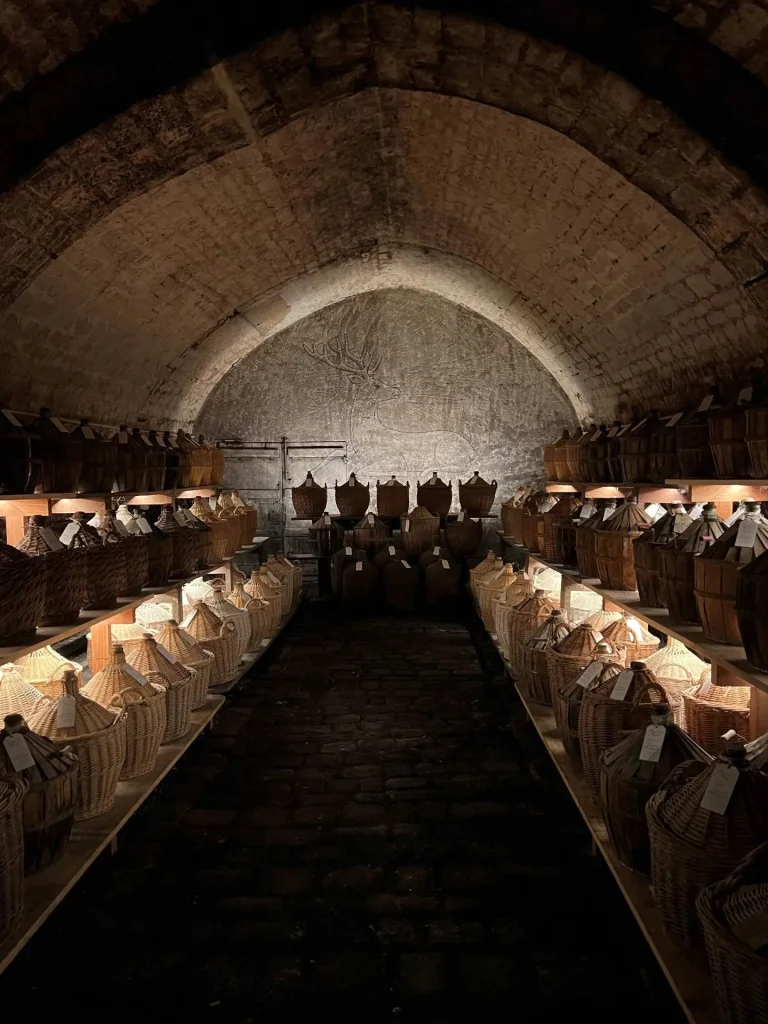After the distillation,eaux-de- vie are put in oak barrels for minimum two years, often more.
Exchanging flavours with wood
The exchange between the wood and the eau-de-vie allaws eau-de-vie to develop its colour and aromas… The eau-de-vie becomes increasingly mellow, the bouquet richer and the taste less sharp, the flavour known as “rancio” appears. It is characterised by notes of mushrooms, damp undergrowth and walnut oil—complex and specific aromas that develop during the long barrel ageing. The longer the wine ages, the richer and more concentrated the aromas and the more intense the colour.
The Paradise

Once an eau-de-vie has reached maturity, the Cellar Master – also known as Master Blender – determines to halt the ageing process. He/she transfers them to glass containers called “dame-jeanne”, where they will rest protected from the air for many decades without developing further, the ageing process no longer operates in glass.
